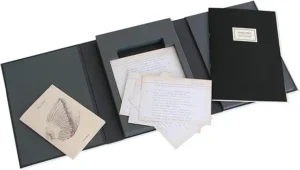Pale Fire: A Poem in Four Cantos by John Shade (aka Vladimir Nabokov) 2010
Vladimir Nabokov’s “Pale Fire” is a masterpiece, brilliantly conceived and executed and thought be many to be his greatest novel. It’s a spectacular example of VN’s conceptual and verbal artistry with “Aha” moments, smiles and laughs, and head-shaking awe on every page.
The novel is written in the form of a commentary by Charles Kinbote, a visiting Zemblan professor at Wordsmith University in New Wye, Appalachia. Kinbote’s comments refer to a 999-line poem by his neighbor in New Wye, the poet John Shade. In the course of Kinbote’s increasingly irrational and obsessive commentary on Shade’s poem, it becomes clear that he is Charles Xavier, the exiled King of Zembla who escaped a coup staged by extremists. A gay man given to bizarre behavior, Kinbote thinks Shade’s poem is about him and Zembla, and his commentary reflects that bizarre mistaken notion. The book reaches its climax when Shade is murdered by Jock Grey, an escaped mental patient, who was actually a Zemblest regicide, Jacob Gradus whose travels from Zembla to Geneva, Nice, and New York City are described in great detail.
If you think that story is confusing, try working your way through this beautiful boxed set comprising two versions of the 999 line eponymous poem. One version is in a small book illustrated with the wings of a cedar waxwing and an Admiral butterfly and a second version is a set of 4×6 notecards on which Shade wrote the poem. These index cards reflect Nabokov’s writing style in which he wrote long novels on index cards and pieced them together. The boxed set also contains a booklet entitled ‘Pale Fire: Reflections’ containing two essays. One is by Brian Boyd, a New Zealand academic whose entire career has been spent reading and writing about Nabokov. The other is by a Lamar University (Texas) poetry professor, R. S. Gwynn. Boyd and Gwynn, picking up where Nabokov ended in 1962 when the novel ‘Pale Fire’ was published, plant their respective tongues firmly in their cheeks and treat Shade’s poem as a serious literary effort.
I read their essays before re-reading Shade’s poem, and was initially unclear as to whether Boyd and Gwynn were writing serious literary criticism, but upon reading the poem, it became crystal clear. The poem written in 999 lines of heroic rhyming couplets, is simply a screamer with clever bon mots, wordplay, puns, literary allusions, and neologisms that are Nabokov’s signature style. Butterflies appear here and there in the poem as Shade explores the ‘abyss’ of death highlighted by the suicide of his daughter, Hazel. (Notice the resemblance to Charlotte and Dolores Haze of Lolita fame.) How is one to take seriously as Gwynn would have us do, a poem in which some of Shade’s most important thoughts are conveyed while he is clipping his nails. Similarly, one has to at least chuckle when he refers to his parents deaths which “certain words, chance words I hear or read/Such as ‘bad heart’ always to him refer/And “cancer of the pancreas” to her.”
My favorite section is when Shade is writing about beauty and poetry. Here he goes off on an analysis of writing as follows: “And speaking of this wonderful machine:/I’m puzzled by the difference between/Two methods of composing: A, the kind/Which goes on solely in the poet’s mind./A testing of performing words, while he/Is soaping a third time one leg, and B.”
There are times in reading the poem when I laughed out loud; times when I looked up a word on Google; times when I reveled in Nabokov’s brilliant rhyming. Good for Boyd and Gwynn, both serious academics, to join VN in this satiric and beautifully presented work of literary art.



